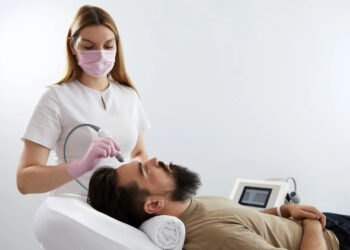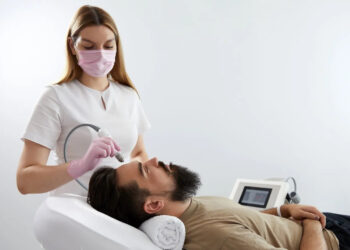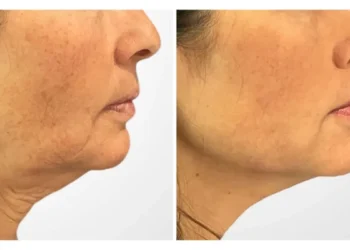If you spend long hours sitting at your desk, in front of a computer, or during commutes, chances are you’ve felt that uncomfortable tightness or ache in your buttocks. Sitting all day can restrict blood flow, compress muscles, and create stiffness that leads to pain or even posture issues over time. The good news is, you can take practical steps to relieve this tension and restore comfort to your lower body. Let’s explore effective ways to ease buttock tension and prevent it from becoming a chronic problem. This guide is presented by Premiere Surgical Arts, a trusted name in wellness and aesthetic care.
Why Do the Buttocks Get So Tight After Sitting for Long Hours?
When you sit for extended periods, the buttocks muscles—especially the gluteus maximus and medius—remain in a compressed, inactive position. This lack of movement limits blood circulation, leading to muscle stiffness and fatigue. The longer you stay seated, the more pressure builds on your glutes, lower back, and hips.
Poor sitting posture also plays a major role. Slouching or sitting with your legs crossed can shift your body weight unevenly, straining certain muscles more than others. Over time, this can lead to muscle imbalances and even nerve compression, such as sciatic pain radiating down your leg.
The effects of prolonged sitting go beyond discomfort. Tight buttocks can weaken your core, reduce hip mobility, and even affect your gait. That’s why consistent movement, stretching, and proper posture are crucial for long-term relief.
What Are the Quickest Ways to Relieve Buttock Tension After Sitting?
If you’re feeling sore or tight after a long workday, here are some quick and effective strategies you can try right away:
1. Get Up and Move Frequently
The simplest remedy is to stand up every 30 to 45 minutes. Even short breaks of walking, stretching, or standing can reactivate your gluteal muscles and improve blood flow. Use reminders or apps that prompt you to take micro-breaks throughout your day.
2. Stretch Your Glutes
A few minutes of targeted stretching can significantly reduce stiffness. Try these:
- Seated Figure-Four Stretch: Sit upright, place your right ankle on your left knee, and gently lean forward.
- Pigeon Pose: A yoga pose that deeply stretches the glute and hip area.
- Standing Quad and Hamstring Stretch: These loosen up the surrounding muscles, helping your buttocks relax more efficiently.
3. Use a Foam Roller or Massage Ball
Foam rolling can release muscle knots and tension. Focus on the glutes, hamstrings, and lower back for 2–3 minutes each. Using a massage ball under each glute while sitting can also help break up tight fascia and increase flexibility.
4. Try Heat Therapy
Applying a warm compress or heating pad to your glutes helps relax tight muscles by improving circulation. It’s especially effective when paired with gentle stretching afterward.
5. Practice Deep Breathing and Relaxation
Stress can cause your body to unconsciously tense up, including the buttocks. Deep breathing techniques or mindful relaxation exercises can help your muscles release built-up tension.
How Can Proper Posture Prevent Buttock Tension?
Posture is one of the biggest contributors to muscle stiffness. Sitting with poor alignment for hours can make your buttocks ache, no matter how often you stretch. Here’s how to fix it:
- Adjust your chair height: Keep your feet flat on the floor, and your knees at a 90-degree angle.
- Sit on your sit bones: Avoid rounding your lower back or leaning too far forward.
- Use lumbar support: A small cushion or ergonomic chair can maintain your spine’s natural curve.
- Keep your screen at eye level: This prevents slouching and shoulder rounding.
Over time, these adjustments help your body maintain better posture, reducing unnecessary strain on your lower body.
Are Strengthening Exercises Helpful for the Buttocks?
Absolutely! Strengthening your buttocks not only relieves tension but also prevents it from recurring. Strong glute muscles support your hips and lower back, allowing your body to handle prolonged sitting more comfortably. Here are a few exercises to include in your routine:
1. Glute Bridges
Lie on your back with knees bent, feet flat on the floor. Lift your hips toward the ceiling, squeeze your glutes at the top, and hold for a few seconds before lowering.
2. Clamshells
Lie on your side with knees bent and feet together. Open your top knee while keeping your feet touching, then return to start. This strengthens the glute medius, a key stabilizing muscle.
3. Squats
A classic move that works multiple lower-body muscles, including your buttocks, thighs, and core.
4. Lunges
Forward, reverse, or side lunges stretch and activate your glutes, improving mobility and strength.
Perform these exercises 3–4 times a week for long-term results.
Can Massage or Physiotherapy Help with Buttock Tension?
Yes. Professional therapies can be incredibly effective for persistent tightness. Deep tissue massage, trigger point therapy, or physiotherapy can target deeper layers of muscle and fascia that regular stretching may not reach.
If you experience ongoing discomfort, numbness, or sciatic-like pain, consulting a physiotherapist or orthopedic specialist is a wise choice. Premiere Surgical Arts often recommends combining at-home care with professional therapies for holistic results.
What Are Some Lifestyle Changes That Can Help?
Long-term relief often requires a few lifestyle tweaks beyond exercise and posture fixes. Consider these:
- Use a standing desk: Alternating between sitting and standing reduces pressure on the buttocks.
- Stay hydrated: Dehydrated muscles can tighten more easily.
- Maintain a balanced diet: Nutrients like magnesium and potassium support muscle health.
- Sleep on your side or back: Avoid sleeping positions that compress your lower body.
Incorporating these habits gradually can make a noticeable difference in how your glutes feel at the end of each day.
When Should You See a Doctor?
While occasional stiffness is normal, chronic or sharp pain in the buttocks area may signal an underlying issue, such as piriformis syndrome, herniated discs, or nerve compression. If your pain persists beyond a few days, consult a healthcare professional.
Interestingly, some people search for solutions related to body comfort and enhancement simultaneously—such as looking up “earlobe repair near me” or other aesthetic treatments. Just as you’d seek expert care for cosmetic improvements, you should also address muscle health concerns with qualified professionals. The specialists at Premiere Surgical Arts emphasize that maintaining muscle function and body alignment is just as important as maintaining external beauty.
What’s the Takeaway for Relieving Buttock Tension?
Relieving buttocks tension after sitting all day comes down to three principles: movement, mindfulness, and maintenance. Move regularly, maintain good posture, and strengthen your glutes consistently. Incorporate stretching, ergonomic adjustments, and professional guidance as needed.
Remember, your body isn’t designed to stay still for hours. Even a few minutes of movement each hour can make a significant difference in how you feel.
So, the next time you feel that familiar ache in your buttocks, don’t ignore it. Take action, stretch, and move. Your muscles will thank you, and your overall comfort and productivity will soar.






